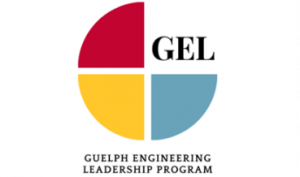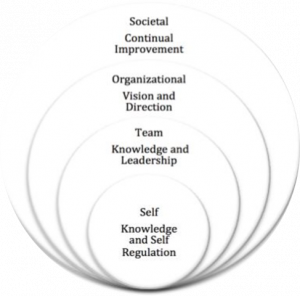6 Workshop 6: Marketing Your Confidence & Experience
Sophia Steele; Dharmveer Dhaliwal; Jack Miranda; Tiana Bressan; and John Donald

INTRODUCTION
We recognize that engineering is a leadership profession.

By the end of this workshop, you will hopefully learn how to effectively market yourselves and gain confidence during situations like jobs interviews or networking events. Following this workshop, you will be able to:
- Identify your personal skills and how they fit into your self marketing process.
- Harness your confidence to market your skills.
- Present your experiences and strengths in an efficient and creative way.
CONFIDENCE IN A PROFESSIONAL SETTING
What does it mean to have confidence in a professional setting? Confidence in a professional setting does not necessarily mean that you are perfect or that you are the best at everything you try. Confidence could come from taking risks, sharing your ideas, expressing yourself, or being innovative. This could happen in an interview setting, professional meeting, networking event, or perhaps when writing your resumes and cover letters.
REFLECTION ACTIVITY
Before getting into the content of the workshop, take some time to introspectively reflect on some of your professional achievements or some of your skills and experiences in a professional setting. What is one achievement that you are proud of?
WHY REFLECT ON OUR PROFESSIONAL STRENGTHS AND WEAKNESSES?
How will this reflection process help us? In order to communicate your strengths you need to first recognize them yourself. What makes you a good employee, a good engineer, or a good coworker? Taking the time to really engage with this is a really important first step. It also allows you to see the areas in which you need to grow. None of us are perfect but if there is somewhere you want to grow professionally, only you have the power to make that happen.
REFLECTION: KEY TAKEAWAYS
It is important to reflect upon the skills that we possess or do not possess. As students who are starting to or continuing to promote ourselves, we must recognize the skills that we have gained in our past experiences or even ones we have learnt in school. On the contrary, knowing what skills we do not possess allows us to recognize what skills we must work on developing while maintaining a growth mindset.
We all have achievements that we can promote. By recognizing this fact, we can more confidently communicate our strengths to others and no matter how insignificant we may see it, there may still be many underlying skills present.
WHAT IS A PITCH?
When we think of a pitch, we usually imagine someone in a boardroom selling some big idea, but the pitch approach can be used in almost any professional context to communicate ideas in an impactful way.
A good pitch is clear and concise. This often requires preparing the key points you want to deliver ahead of time and practicing them. Additionally, a strong pitch is one that highlights the unique traits and capabilities that make you or your idea stand out to your audience. Whether this is an interview or a meeting, you want to be memorable in your delivery.
HOW CAN THE PITCH APPROACH HELP ME?
The pitch approach can be utilized to help you become comfortable speaking about your professional capabilities and experiences in a clear and confident way. It may take some time to discover the best tools for you when it comes to professional communication, especially in an interview context. The pitch approach allows you to practice speaking with conviction and developing creative methods to deliver information. As discussed before, it all takes practice which is why utilizing a pitch approach can help you establish some skills in the preparation and delivery of ideas in a professional setting.
ACTIVITY 1: PITCH AN ITEM
In this activity, you are expected to pick an item from the list below and spend a few minutes researching the product. After you have done your research, you will construct a pitch to sell the item to a friend or family member. Aim to keep your pitch between 30 seconds and 1 minute.
The purpose of this activity is to:
- Apply creative thinking and developing creative methods to deliver information.
- Learn to communicate ideas, skills, and thoughts in a concise yet impactful way.
- Gain confidence in sharing ideas and experiences.
Here are some things to consider while making your pitch:
- Know your product.
- Know your audience and speak to them.
- It is a short summary of what the product is, its benefits, capabilities, and its purpose.
Product name and website:
ACTIVITY 1: KEY TAKEAWAYS
Pitches are unique to each individual since you will present your own unique experiences, ideas, or any other necessary skills. Additionally, some people may find that some communication tools are easier to use than others. We can use this to speak about professional capabilities and experiences in a clear way. With practice, we can be more comfortable and confident in pitching ourselves. As you continue practicing your pitches, you will understand what tools work better for you and better understand your audience to tailor your experiences to their needs.
THE STAR METHOD
The STAR method is another communication tool you can use to help you market your professional skills whether that is in the context of interviews, resume bulletin points, or communicating in a networking setting.

The STAR method allows you to make sure you are effectively communicate your achievements and experiences. This is a framework you can follow to allow recruiters or hiring managers to gain a clear picture of what you have accomplished.
1. SITUATION
The first aspect of STAR is setting the situation. This allows your audience to understand the stakes of the situation that you were in and the role you had in that team or project.
2. TASK
The second aspect of STAR, allows you to articulate what the task at hand was. What exactly was it that needed to be achieved and why was it important?
3. ACTION
The third aspect of STAR is action. This focuses on what you did to contribute to the task. Try to avoid using vague language to avoid your audience from guessing. You want to be as specific as possible to give them a clear idea of what it was that you did to contribute to the achievement.
4. RESULTS
Finally, you want to discuss your results. This is where it can be really helpful to bring in any statistics, distinctions, or recognition you received for your achievement and the impact that it had. If this was in a professional setting, did it improve efficiency for your team? If it was academic setting, did you receive an award or scholarship? Or if it was a volunteer role how did it benefit your community or those you were serving? These types of results is what you want to report here.
ACTIVITY 1: THE STAR METHOD
In this activity, pick one skill from your resume and implement the STAR method.
Here is an example of how you can do this:
Example: Teamwork
Describe a situation in which you were required to lead a group of people
Situation/Task: In the previous spring, I was given the role of being the marketing manager for our summer camp. I was given the task of leading a team of 5 individuals to help create marketing campaigns to promote our camp.
Action: I was responsible for leading and planning team meetings and delegating specific roles to the other members of our team. I also used my role to be the spokesperson for our camp and I visited 8 schools in the region to promote our camp.
Result:We saw an increase in our camp enrolment by 25% compared to previous summer, as our marketing campaign through social media saw an increase in engagement as we gained 200 followers on our Instagram page.
ACTIVITY 2: KEY TAKEAWAYS
The STAR method is very versatile as we can use them in resumes or in interviews. The major advantage of STAR is that it lets us detail our experiences concisely using a common pattern without rambling or speaking excessively. Let us go through a quick recap of what the STAR method entails.
- Situation: Allows the audience to understand the context of the situation and the role you had.
- Task: Allows you to detail what the task at hand was. What exactly was it that needed to be achieved and why was it important?
- Action: What you did to contribute to the task. Be as specific as possible and give them a clear idea of what it was that you did to contribute to the achievement. This clearly demonstrates what skills you used.
- Results: Bring in any statistics, distinctions or recognition you received for your achievement and the impact it had. Any of these types of results is what you want to report here.
Try to tailor your experience especially with the skills or values that the organization values by putting specific stories where you applied your skills. This supports the skills you claim to have.
WORKSHOP KEY TAKEAWAYS
In summary, practicing these communication tools allow us to be more comfortable and confident in our professional capabilities. Looking back at our activities we can see how each activity is a step in an overall process of marketing our experiences. We also discussed the importance of recognizing your skills and achievements. By realizing what skills we do or do not have and recognizing the skills that we contain either in our past workplaces or even in school, we can effectively market our skills and experiences. On the contrary, knowing what skills we do not have gives up the recognition to what we must develop while maintaining a growth mindset.
RESOURCES
Click here to access the workshop worksheets.
STAR Job Interview Method Explained video: Click here

